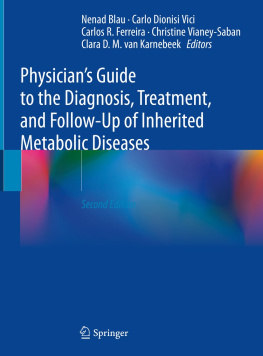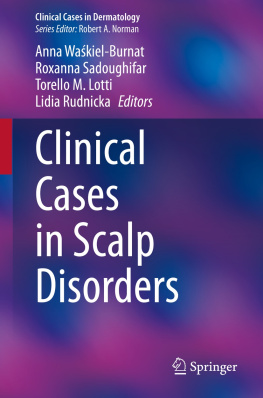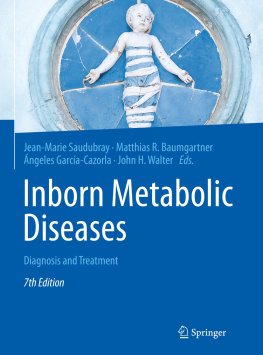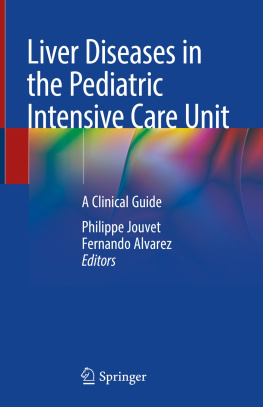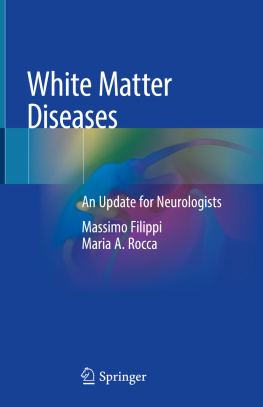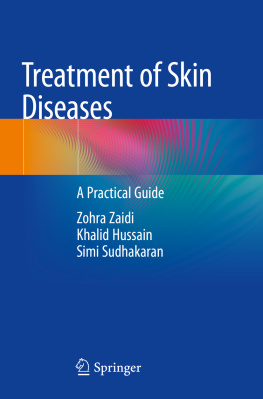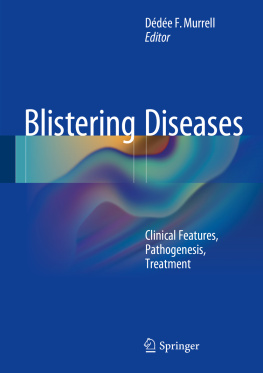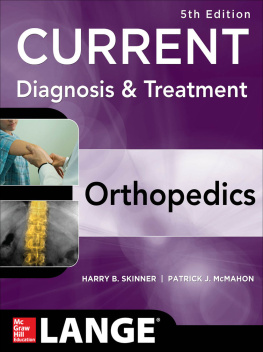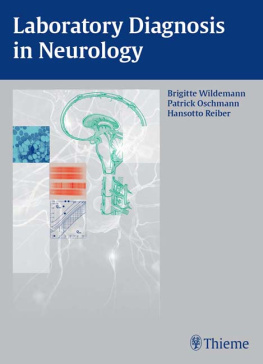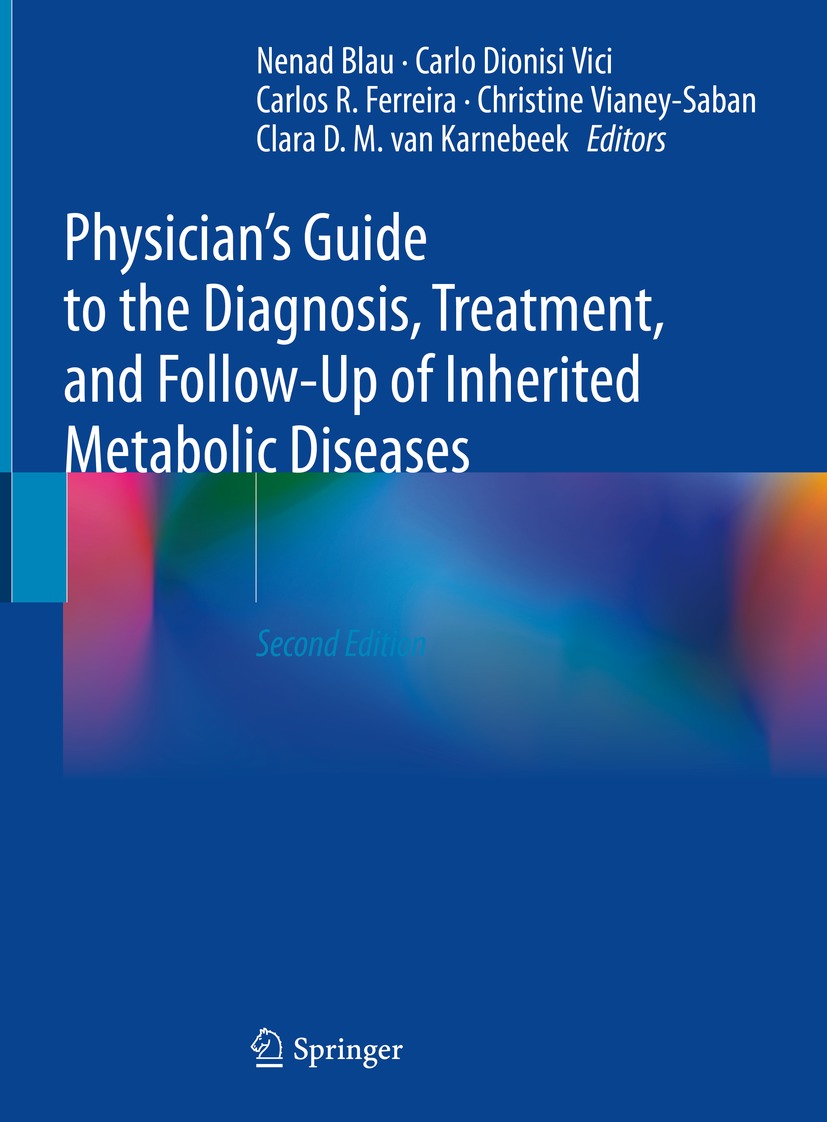Editors
Nenad Blau , Carlo Dionisi Vici , Carlos R. Ferreira , Christine Vianey-Saban and Clara D. M. van Karnebeek
Physicians Guide to the Diagnosis, Treatment, and Follow-Up of Inherited Metabolic Diseases
2nd ed. 2022

Logo of the publisher
Editors
Nenad Blau
Division of Metabolism, University Childrens Hospital, Zrich, Switzerland
Carlo Dionisi Vici
Division of Metabolic Disease, Department of Pediatric Subspecialties, Bambino Ges Childrens Hospital-IRCCS, Rome, Italy
Carlos R. Ferreira
Division of Genetics and Metabolism, Childrens National Health System, Washington, DC, USA
Christine Vianey-Saban
Department of Inborn Errors of Metabolism and Newborn Screening, CHU Lyon, Centre de Biologie et de Pathologie Est, Bron Cedex, France
Clara D. M. van Karnebeek
Emma Kinderziekenhuis, Amsterdam, Noord-Holland, The Netherlands
ISBN 978-3-030-67726-8 e-ISBN 978-3-030-67727-5
https://doi.org/10.1007/978-3-030-67727-5
Springer Nature Switzerland AG 2022
This work is subject to copyright. All rights are reserved by the Publisher, whether the whole or part of the material is concerned, specifically the rights of translation, reprinting, reuse of illustrations, recitation, broadcasting, reproduction on microfilms or in any other physical way, and transmission or information storage and retrieval, electronic adaptation, computer software, or by similar or dissimilar methodology now known or hereafter developed.
The use of general descriptive names, registered names, trademarks, service marks, etc. in this publication does not imply, even in the absence of a specific statement, that such names are exempt from the relevant protective laws and regulations and therefore free for general use.
The publisher, the authors and the editors are safe to assume that the advice and information in this book are believed to be true and accurate at the date of publication. Neither the publisher nor the authors or the editors give a warranty, expressed or implied, with respect to the material contained herein or for any errors or omissions that may have been made. The publisher remains neutral with regard to jurisdictional claims in published maps and institutional affiliations.
This Springer imprint is published by the registered company Springer Nature Switzerland AG
The registered company address is: Gewerbestrasse 11, 6330 Cham, Switzerland

Stephen Irwin Goodman (19382020)
The Editors take this opportunity to acknowledge Stephen Irwin Goodman, MDone of the pioneers in the field of diagnosis and treatment of inborn errors of metabolism, who passed away while this book was in press, on October 30, 2020for his longstanding efforts and contributions to our series Physicians Guide in Inherited Metabolic Disease. A founding member of both the Society for Inherited Metabolic Disorders and the American College of Medical Genetics (and Genomics), Steve spent his entire professional career at the University of Colorado in Denver with his wife, Patricia, their daughters Michelle and Karen, and their families.
Steve is remembered for his role in establishing the diagnostic methods for organic acidemias, for writing a seminal text on use of GC-MS for analysis of organic acids (with Sanford Markey), defining and characterizing glutaric acidurias type I and II, and contributing knowledge to the diagnosis and management of many other inborn errors of metabolism.
In recognition of his constant guidance and valuable contributions (see Chap.), we wish to dedicate this edition of the Physicians Guide to the Diagnosis, Treatment, and Follow-Up of Inherited Metabolic Diseases to his memory.
Nenad Blau
Carlo Dionisi Vici
Carlos R. Ferreira
Christine Vianey-Saban
Clara D.M. van Karnebeek
Foreword
A new edition for an old subject
The study of inborn errors of metabolism arguably began with Garrods seminal 1902 paper on alkaptonuria (Garrod 1902). At the time, the diagnosis of this disorder was achieved using state-of-the-art technology: visual inspection of recently voided urine. Garrods genius was to use this method to identify and collect a large number of individuals with this rare disorder and to recognize, with input from Bateson, that the familial clustering and distribution of affected individuals (19 affected of 48 individuals in 9 sibships) was consistent with observations made by Gregor Mendel in pea plants some 37 years earlier. An additional feature of alkaptonuria, crucial for Garrods study, is that, at the phenotypic level, it is a relatively mild disorder with minimal, if any, effect on life span. To quote Garrod, an alternative course of metabolism, harmless and usually congenital and lifelong. Thus, it was possible for Garrod to collect affected individuals, many of whom were adults at the time of diagnosis.
From this modest beginning, Garrod not only demonstrated that Mendelism held true in humans, but also suggested that alkaptonuria and a handful of similar disorders (cystinuria, pentosuria, and albinism) were merely extreme examples of variations in chemical behavior which are probably everywhere present in minor degree so that just as no two individuals of a species are absolutely identical in bodily structure neither are their chemical processes carried out on exactly the same lines. First stated in 1902, these ideas lead to Garrods definition in 1931 (Garrod 1931) of chemical individuality as genetically determined biochemical characteristics and capabilities which confer predisposition to and immunities from the various mishaps which are spoken of as diseases. We are only now beginning to put meat on the bones of these prescient predictions.
From Garrods time to the present, progress in identifying specific inborn errors of metabolism has been dependent on technological advances. Thus, in the early 1950s following the development of the first amino acid analyzer, a host of new (really newly recognized) disorders were described on the basis of abnormal patterns of amino acids in plasma and/or urine. Similarly, the development of GC/MS technology leads to the recognition of many organic acidemias, and the development of tissue culture and somatic cell genetic techniques leads to a burst of newly recognized lysosomal storage diseases.
Currently, we are experiencing at least two technologic revolutions: genomic sequencing methods that began with the seminal 2009 paper of Ng et al. (2009) showing that the cause of rare Mendelian disorders could be identified by applying genomic methods to well-phenotyped patients and, more recently, the development of unstructured metabolomic methods that measure thousands of metabolites not previously examined by classical biochemical methods. Application of genomic methods has already had a profound effect on our identification and diagnosis of patients with inborn errors (Posey et al. 2019; Bamshad et al. 2019). Advances and widespread application of metabolomics seems likely to have a similar effect (Burrage et al. 2019; Miller et al. 2015). Moreover, the two technologies are synergistic in their power to identify newly recognized monogenic disorders and to expose their pathophysiology.

